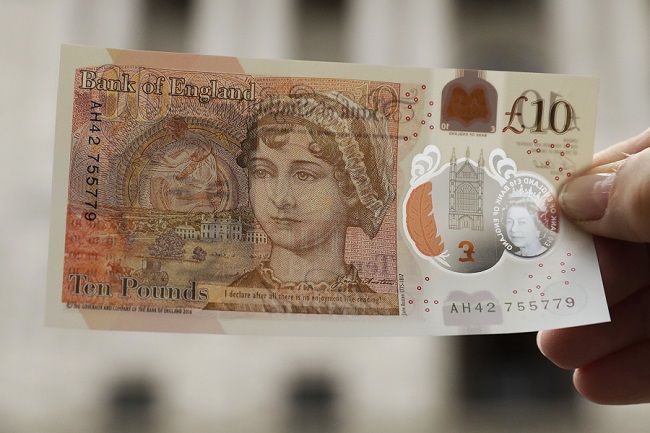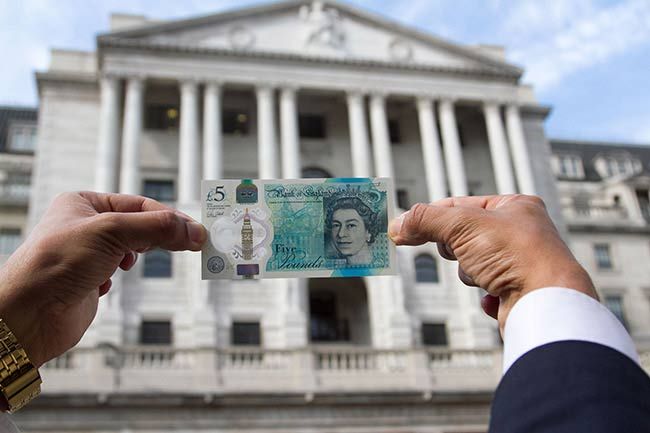The new plastic £10 notes featuring an image of Jane Austen have gone into circulation. More than a million of the notes were released at selected cash machines across England from 14 September, and like the new £5 note, they are made using polymer.
STORY: Old £5 notes need to be spent by this date
The notes are expected to last around five years – two-and-a-half times longer than paper notes - and have increased security features which makes them harder to counterfeit. They also have a tactile feature developed with the help of the Royal Society of the Blind in order to help blind and partially-sighted people.
The new £10 notes entered circulation on Thursday
Jane Austen features on the new notes, with the design formally unveiled on 18 July 2017, the 200th anniversary of her death. "There can be no better place to unveil the new £10 banknote, featuring Jane Austen, and there can be no better time than today, the 200th anniversary of her death," Bank of England governor Mark Carney said at the launch.
RELATED: All you need to know about the new £1 coin
Production of the new polymer note began last August and the bank has already printed more than 275 million notes. While paper £10 notes are still legal tender, they will gradually be phased out and eventually withdrawn in spring 2018.
Like the updated £5 notes, the new £10 notes are made from polymer
The new notes also follow the launch of the 12-sided £1 coin in March, which has been hailed "the most secure coin in the world". It contains a hidden high-security feature built into it to protect it from counterfeiting. The old £1 coin will remain in circulation until midnight on 15 October 2017 when it loses its legal tender status. The Bank of England will release a new plastic £20 note in 2020, but there are currently no plans to update the £50 note.
See the latest money stories here.











